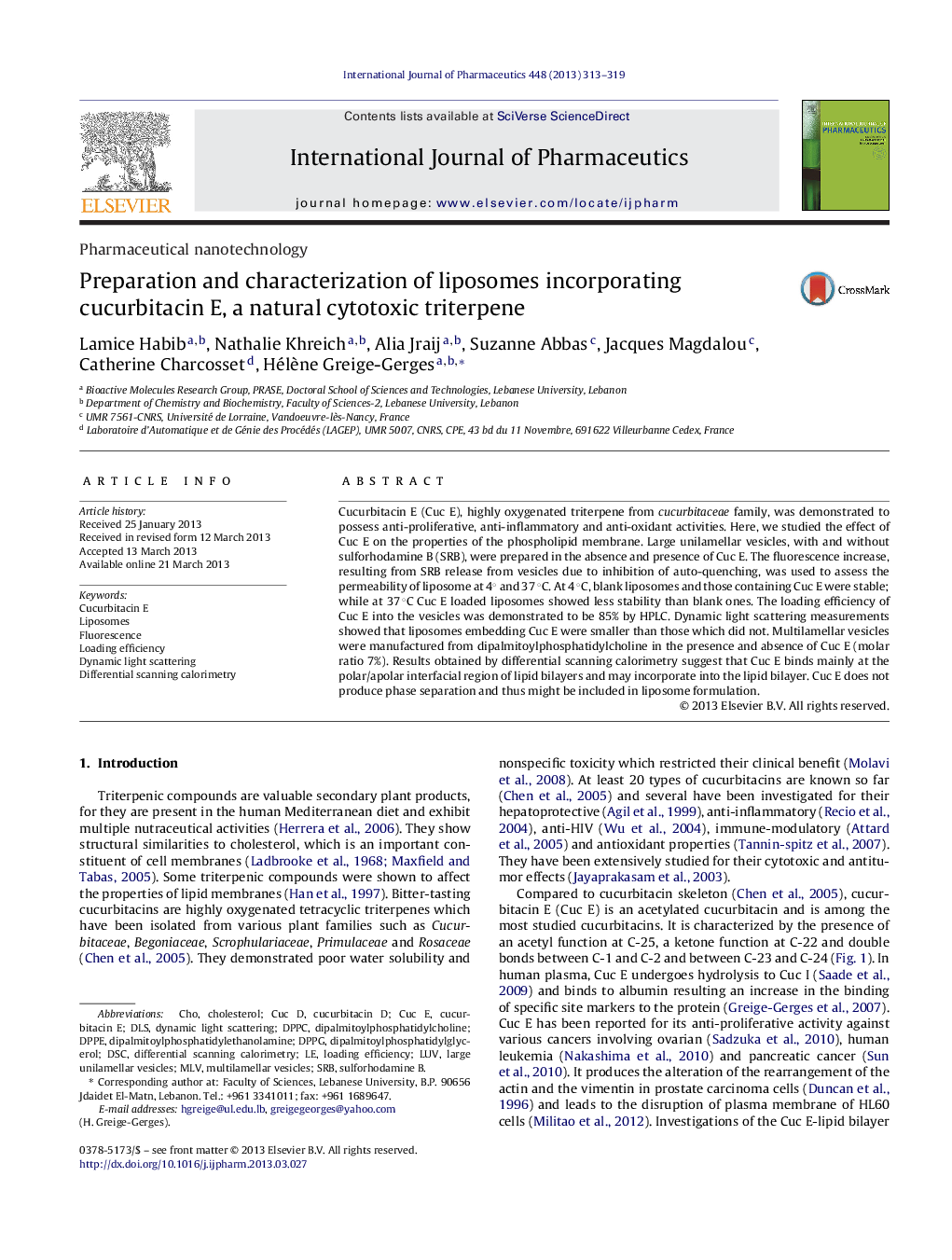| Article ID | Journal | Published Year | Pages | File Type |
|---|---|---|---|---|
| 2502557 | International Journal of Pharmaceutics | 2013 | 7 Pages |
Cucurbitacin E (Cuc E), highly oxygenated triterpene from cucurbitaceae family, was demonstrated to possess anti-proliferative, anti-inflammatory and anti-oxidant activities. Here, we studied the effect of Cuc E on the properties of the phospholipid membrane. Large unilamellar vesicles, with and without sulforhodamine B (SRB), were prepared in the absence and presence of Cuc E. The fluorescence increase, resulting from SRB release from vesicles due to inhibition of auto-quenching, was used to assess the permeability of liposome at 4° and 37 °C. At 4 °C, blank liposomes and those containing Cuc E were stable; while at 37 °C Cuc E loaded liposomes showed less stability than blank ones. The loading efficiency of Cuc E into the vesicles was demonstrated to be 85% by HPLC. Dynamic light scattering measurements showed that liposomes embedding Cuc E were smaller than those which did not. Multilamellar vesicles were manufactured from dipalmitoylphosphatidylcholine in the presence and absence of Cuc E (molar ratio 7%). Results obtained by differential scanning calorimetry suggest that Cuc E binds mainly at the polar/apolar interfacial region of lipid bilayers and may incorporate into the lipid bilayer. Cuc E does not produce phase separation and thus might be included in liposome formulation.
Graphical abstractFigure optionsDownload full-size imageDownload high-quality image (149 K)Download as PowerPoint slide
